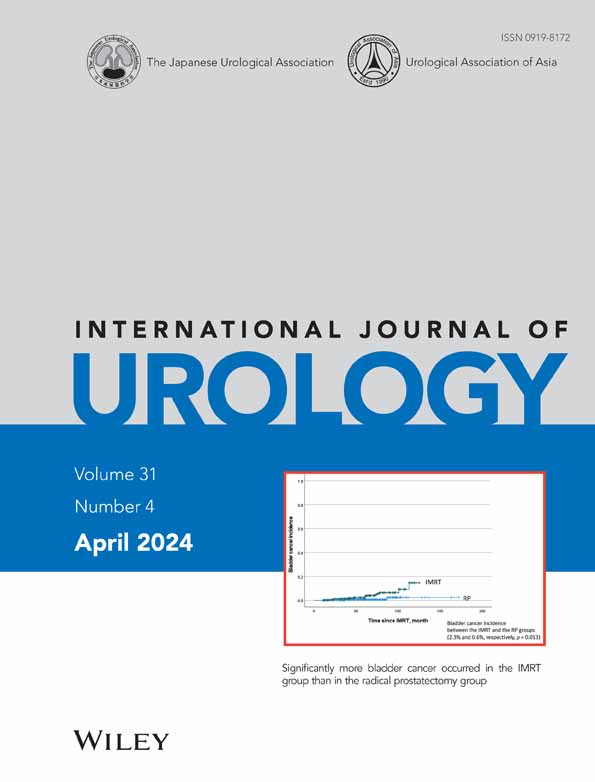Surgical and functional outcomes of repeat robot-assisted laparoscopic partial nephrectomy compared with repeat open partial nephrectomy
Abstract
Objectives
To examine the surgical and functional outcomes of patients who have undergone repeat open partial nephrectomy (reOPN) or robot-assisted laparoscopic partial nephrectomy (reRAPN).
Methods
Until May 2022, 3310 patients with renal tumors underwent nephron-sparing surgery (NSS) at affiliated institutions. Of these, 22 and 17 patients who underwent reOPN and reRAPN, respectively, were included in this study.
Results
No significant differences were found between the groups in terms of sex, age, comorbidities, recurrent tumor size at repeat NSS, interval from recurrence to initial NSS, and nephrometry score. ReRAPN had a shorter operative time (median: 138.0 vs. 214.0 min; p = 0.0023) and less estimated blood loss (median: 50.0 vs. 255.0 mL; p = 0.0261) than reOPN. The incidence of complications with Clavien–Dindo grade ≥ 2 was higher in the reOPN group than in the reRAPN group (31.8 vs. 5.9%; p = 0.0467). The mean decrease in the estimated glomerular filtration rate at 3 months postoperatively was not significantly different between the groups. The trifecta achievement rates in the reRAPN (64.7%) and reOPN (27.3%) groups were significantly different (p = 0.0194). On multivariate analysis, age and surgical method were significant predictors of trifecta achievement after partial nephrectomy.
Conclusions
There were no differences in postoperative renal functional outcomes between reOPN and reRAPN. ReRAPN is superior to reOPN in terms of surgical burden. Therefore, ReRAPN is an important minimally invasive surgery for recurrent renal cell carcinoma.
CONFLICT OF INTEREST STATEMENT
The authors declare no conflict of interest.




